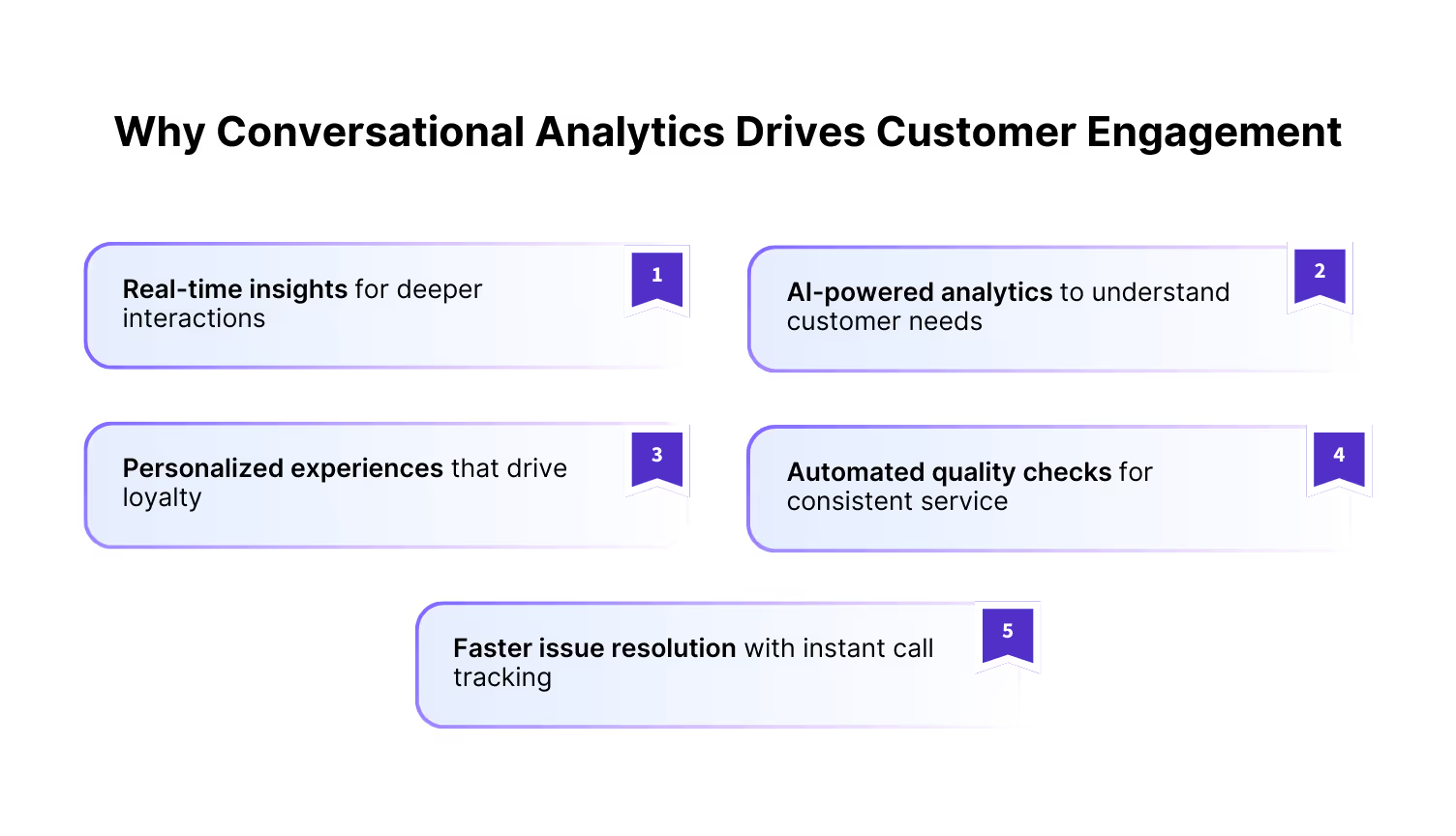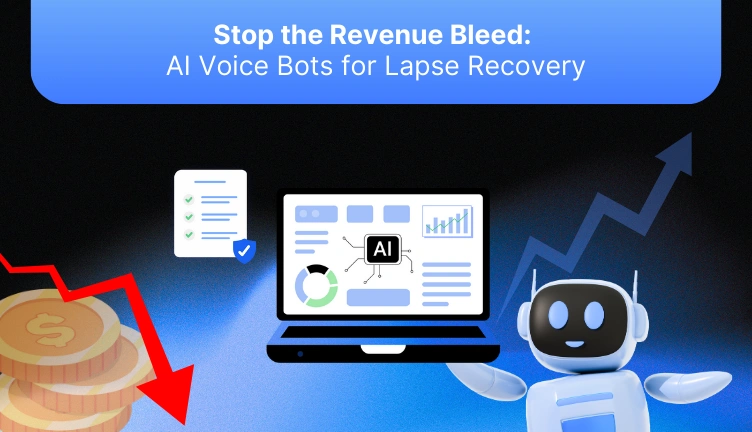As businesses strive to stay ahead, the demand for smarter technologies has skyrocketed. One such innovation is multimodal AI, which promises to revolutionize how contact centers interact with customers. However effective as it may seem, implementing multimodal AI comes with its own challenges, including integration complexities and data privacy concerns.
What is multimodal AI? Simply put, it's a technology that combines different data types, like text, voice, and images, to provide more accurate insights. However, the complexity of managing and deploying these systems can be overwhelming.
In this blog, we’ll explore the benefits, challenges, and real-world applications of multimodal AI. Are you ready to learn how it can transform your contact center operations? Let’s explore!
Discover multimodal AI’s sentiment analysis capability. Book a demo with Convin AI to learn more!
What is Multimodal AI?
Multimodal AI is a powerful technology that combines and processes different data types (such as text, speech, images, and video) to create more accurate and intelligent insights. Unlike traditional AI, which focuses on one modality (e.g., voice or text), multimodal AI integrates these various data streams, allowing systems to understand and respond to customers more effectively.
For contact centers, this means an AI system that seamlessly handles voice calls, text chats, and even video interactions. By blending these modalities, multimodal AI helps businesses provide a more personalized and efficient customer experience.
- Multimodal AI: Combines data from different sources (e.g., voice, text, video) for accurate insights.
- For Contact Centers: Enhances customer experience by offering personalized and efficient support.
- Key Advantage: A holistic view of customer interactions across multiple channels.
As we move forward, let’s dive deeper into the key components of an effective multimodal AI model.

What Makes a Multimodal AI Model Effective?
An effective multimodal AI model blends multiple sources of data—text, voice, and images—into a cohesive system that can interpret complex customer interactions. This is made possible through the use of several advanced technologies like Natural Language Processing (NLP), Machine Learning (ML), and computer vision.
- Text and Speech Recognition: Multimodal AI can transcribe voice conversations into text and process that alongside text-based interactions.
- Image and Video Analysis: AI can analyze visual data from video calls or images to gather additional insights.
- Cross-Modal Understanding: The model identifies patterns and relationships between these modalities to improve decision-making.
For example, a customer might send a text message asking about the status of an order, and in a follow-up voice call, the AI can recall and analyze the text interaction to offer a more tailored response.
- NLP and ML: Enables processing of text and speech, offering smarter responses.
- Cross-Modal Interaction: AI recognizes patterns from different sources for deeper insights.
- Integration of Visual Data: Enhances understanding with images or video, offering more context.
Businesses rely on various specialized multimodal AI tools to effectively implement multimodal AI.
Multimodal AI Tools
Multimodal AI tools integrate various data types, offering businesses advanced AI capabilities for automation. Some notable examples of multimodal ai tools include:
- Google Cloud Speech-to-Text: Converts audio content into text for easy analysis.
- IBM Watson Visual Recognition: Analyzes visual data, providing context for text or voice inputs.
- Microsoft Azure Text Analytics: Extracts insights from text for sentiment analysis and intent recognition.
- Dialogflow (by Google): AI-powered chatbot that supports multimodal conversations using text and voice.
- Amazon Rekognition: Identifies objects and scenes in images and videos, enhancing interaction quality.
- Tesla Autopilot Autonomous Vehicles: integrates visual data (cameras), audio signals (sensors), and text data (maps) for navigation.
- GPT Models: GPT-4 is a process by OpenAI that generates text, integrating multimodal capabilities for tasks such as summarization, translation, and even coding.
In conclusion, multimodal AI tools offer powerful capabilities to improve customer engagement and automate processes across multiple channels.
Building on the capabilities of multimodal AI, multimodal generative AI takes content creation to the next level.
Multimodal Generative AI
Multimodal generative AI combines various data types to create new content across channels. This technology generates outputs like text, images, and videos from input data, making it highly versatile. Its applications in contact centers can lead to automated content generation, personalized customer interactions, and advanced chatbots.
In conclusion, multimodal generative AI transforms how businesses create and interact with customers. Its ability to generate diverse content holds great promise for enhancing customer engagement and operational efficiency.
Multimodal AI models are built to be adaptable, continually learning from new data to enhance decision-making. This brings us to how these models can boost contact center operations.
Implement seamless integration of voice & chat automation with Convin’s multimodal AI!
Benefits of Multimodal AI for Contact Centers
The integration of multimodal AI can bring numerous advantages to contact centers. The impact is significant, from improving customer satisfaction (CSAT) to reducing average handle time (AHT).
- Improved Customer Experience: By providing agents with deeper insights into customer behavior and sentiment, multimodal AI enables personalized responses. This makes interactions more meaningful and less robotic.
- Better Decision-Making: Real-time customer data analysis—across voice, text, and images—allows faster and more informed decisions, improving operational efficiency.
- Increased Productivity: AI models can handle repetitive tasks, freeing up human agents to focus on more complex issues. This leads to reduced AHT and increased sales conversion.
Key Stats on Multimodal AI Benefits:
- 21% increase in sales conversion rates.
- 27% improvement in customer satisfaction (CSAT).
- 12% boost in repeat purchases and customer retention.
The following section will explore some real-world use cases of multimodal AI in contact centers.
Elevate call center performance with Convin’s live coaching multimodal AI!
This blog is just the start.
Unlock the power of Convin’s AI with a live demo.

Use Cases of Multimodal AI in Contact Centers
Multimodal AI is already making waves in various industries, transforming contact centers' operations. Let’s explore a few use cases where multimodal AI is being successfully implemented.
- Customer Support Automation : AI-powered chatbots and voice assistants are now handling a large percentage of customer inquiries. By analyzing text and voice interactions, these systems can provide more accurate and relevant answers in real-time.
- Sentiment Analysis: Multimodal AI models can assess customer tone, language, and behavior from voice and text to detect frustration or satisfaction. This allows agents to adjust their responses accordingly, offering a more empathetic and targeted approach.
- Visual Assistance: In industries like e-commerce or healthcare, customers may require help with product troubleshooting or guidance through a video call. AI can analyze the video feed and customer input to offer solutions or prompt human agents if necessary.
These use cases improve the quality of customer interactions and increase overall efficiency in contact center operations.
- Voice Assistants: Help automate routine queries and provide immediate customer support.
- Sentiment Analysis: Identifies customer feelings for more personalized and efficient support.
- Visual Assistance: AI supports video-based interactions, improving complex troubleshooting.
As the multimodal AI industry grows, let's explore its current status and trends.
Current Status of the Multimodal AI Industry
The multimodal AI industry is rapidly growing, with applications spanning multiple sectors. Industries like healthcare, finance, and retail leverage multimodal AI to enhance customer experiences and streamline operations.
In conclusion, the multimodal AI industry holds immense potential, driving innovation across various fields. Companies that adopt this technology early will be at the forefront of customer service transformation.
With all these advantages, multimodal AI is becoming a key player in the future of contact centers. However, like any technology, challenges and ethical concerns must be addressed.
Automate and analyze across channels with Convin’s multimodal AI tools!
Challenges and Ethics of Multimodal AI
While multimodal AI holds immense potential, there are several challenges that contact centers need to consider before implementing these systems. Some of these challenges of multimodal AI are:
- Data Quality Issues: Multimodal AI relies on large datasets, which must be of high quality to ensure accurate outputs. Poor data can lead to incorrect predictions, especially in sensitive areas like customer support.
- Technical Barriers: Implementing multimodal AI models requires a significant technological infrastructure, including advanced hardware and software. This can be a substantial investment for smaller contact centers.
- Privacy and Security: Since multimodal AI often processes sensitive customer data, there are ethical concerns regarding privacy and the security of personal information. Contact centers must comply with data protection regulations like GDPR and prioritize transparency.
Ethical Considerations:
- Bias in AI Models: AI models can inherit biases in training data, leading to unfair treatment of certain customer groups.
- Transparency: Contact centers need to be transparent about how customer data is used and ensure that AI-powered interactions are communicated to customers.
These challenges highlight the need for careful planning and ethical consideration when deploying multimodal AI in contact centers.
Take your multimodal AI strategies further with Convin AI’s automation tools. Book a demo now!
Multimodal AI: The Future of Contact Centers
In conclusion, multimodal AI offers a promising future for contact centers, delivering improved customer experiences, more informed decision-making, and better operational efficiency. Despite the challenges and ethical concerns, technology is quickly becoming essential for businesses looking to stay competitive in a fast-changing landscape.
For contact center leaders, adopting multimodal AI solutions can be a transformative step toward higher productivity, reduced costs, and more satisfied customers. Understanding its benefits, addressing the challenges, and applying best practices can position your contact center for long-term success.
As the world moves toward more intelligent, data-driven solutions, the integration of multimodal AI will play a central role in shaping the future of customer service.
Explore the future of Multimodal AI with Convin AI! Schedule a demo now.
FAQs
1. Who invented multimodal?
The concept of multimodal learning and interaction doesn't have a single inventor, but it evolved from various fields such as cognitive science, psychology, and artificial intelligence. Researchers like Dr. Howard Gardner popularized the idea of multiple intelligences, which influenced multimodal approaches. The integration of multiple modalities (such as visual, auditory, and kinesthetic) in AI and machine learning has been further developed by tech pioneers in the AI space.
2. Is multimodal a learning style?
Yes, multimodal learning refers to an approach that uses multiple modes of communication and learning. Unlike traditional learning styles, which focus on visual, auditory, or kinesthetic learning separately, multimodal learning combines these styles to cater to a wider range of learner preferences. This approach is believed to improve engagement and retention by using visual, auditory, and tactile elements in the learning process.
3. Is multimedia and multimodal the same?
No, multimedia and multimodal are not the same, though they are related. Multimedia refers to content that uses a combination of different media forms such as text, audio, video, and images. Multimodal, on the other hand, involves using multiple modes or channels (e.g., text, speech, gestures, or touch) to convey or process information, particularly in AI and machine learning. While multimedia focuses on content, multimodal emphasizes interaction across various types of input or output.
4. How is AI Used in Media Planning?
AI in media planning leverages data-driven insights to optimize advertising strategies. It analyzes audience behavior, content preferences, and engagement patterns, helping marketers make more informed decisions about ad placement, timing, and budget allocation, thus improving overall campaign effectiveness.


.avif)
.avif)

.avif)



.avif)